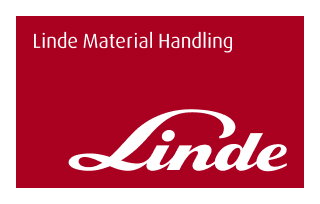- Blog
- Blog Article


Tight schedules, confined spaces and heavy workloads demand equipment that can respond with accuracy, efficiency and control. Conventional drive systems often struggle to balance power with precision, resulting in wasted time, higher wear and tear, and increased fuel use.
To overcome these challenges, Linde Material Handling designed and engineered the hydrostatic drive, a system that stands as one of Linde’s most significant innovations.
A hydrostatic drive is a system that converts rotational energy from the engine into fluid energy and then back to rotational energy at the drive motor.
The hydrostatic drive uses a closed hydraulic circuit powered by the internal combustion engine. A pump driven by the engine transmits energy through oil pressure to two hydraulic motors on the drive axle. The driver controls both the volume and direction of oil flow, and therefore the truck’s speed and direction by using two pedals, also known as Linde’s dual-pedal design.
This simple but effective dual-pedal control design means one pedal moves the truck forward, the other in reverse. Switching between them instantly reverses direction without the need for a clutch, transmission, or brakes. The closed oil circuit itself brings the truck to a smooth stop, allowing for seamless, intuitive operation.
The hydrostatic drive allows stepless acceleration and automatic braking, giving operators full control over speed and stopping distance. Its precision comes from a component known as the swash plate, which converts driver input into rotary motion at the drive wheels. Every movement of the pedal translates directly into truck response, making manoeuvring and load handling effortless, even in confined areas.
During operation, the system automatically balances power between travel and lift functions. When the mast is raised, the lift pump directs oil flow to the hydraulics while the traction pump is not affected and maintains the same speed. The system adjusts itself to provide the exact amount of power required for each task, allowing the engine to remain in its most economical range. The result is lower fuel consumption, smooth and stable lifting, and cleaner performance.
Linde’s hydrostatic drive eliminates the need for traditional wear components like a clutch, differential, gearbox, or service brakes. And fewer moving parts mean less wear, lower maintenance, and reduced operating costs. In fact, many components are maintenance-free, helping businesses achieve longer uptime, lower servicing costs, and a stronger return on investment.
In combination with robust industrial engines, this system excels in continuous, heavy-duty operation, delivering consistent performance even in demanding environments.
As a unique selling point for Linde Australia, this hydrostatic drive system is not available from any other forklift manufacturer in the country, reinforcing Linde’s position as the benchmark for precision, control and reliability.
The combination of hydrostatic drive, dual-pedal control, and Linde Load Control enables operators to carry out travel and lift tasks with accuracy and speed. Each movement feels natural and precise, supporting higher handling capacity and consistent productivity across shifts.
With decades of refinement behind it, the Linde hydrostatic is an industry benchmark for efficiency, reliability, and operator comfort. By combining intelligent engineering with driver-focused design, it delivers the smooth, powerful, and economical performance that has made Linde a trusted partner to industries globally.
Keep up to date with the latest in material handling reliability, safety, sustainability and innovation by visiting our Content Hub and subscribing to our quarterly newsletter. And for the latest news and updates on all things Linde, follow us on LinkedIn.
VISIT CONTENT HUB